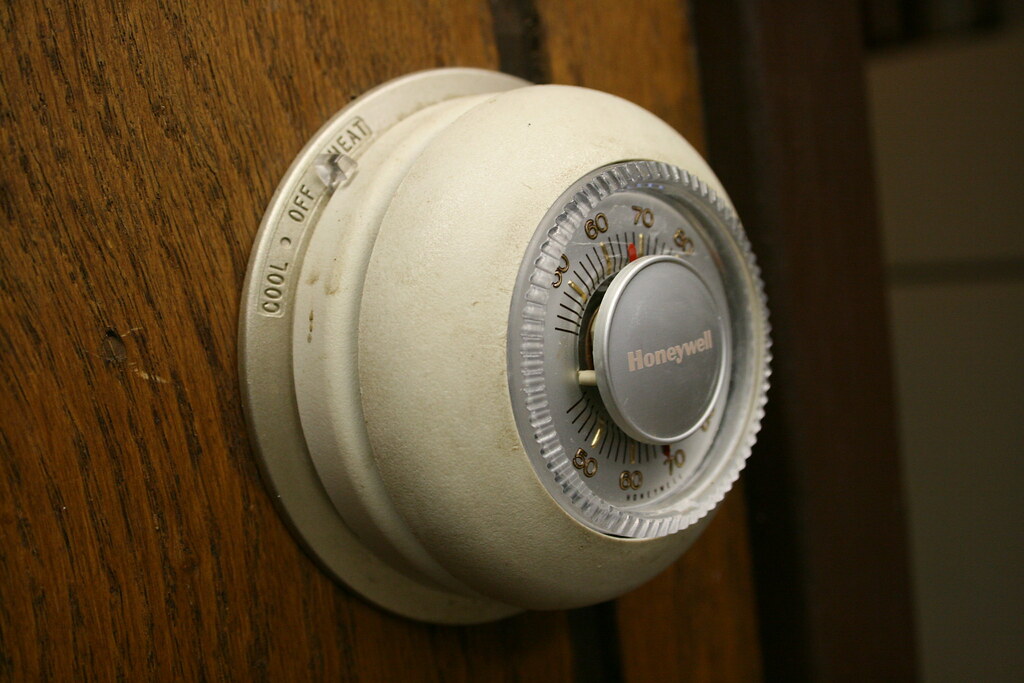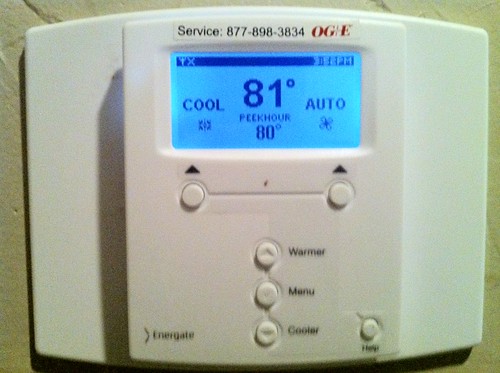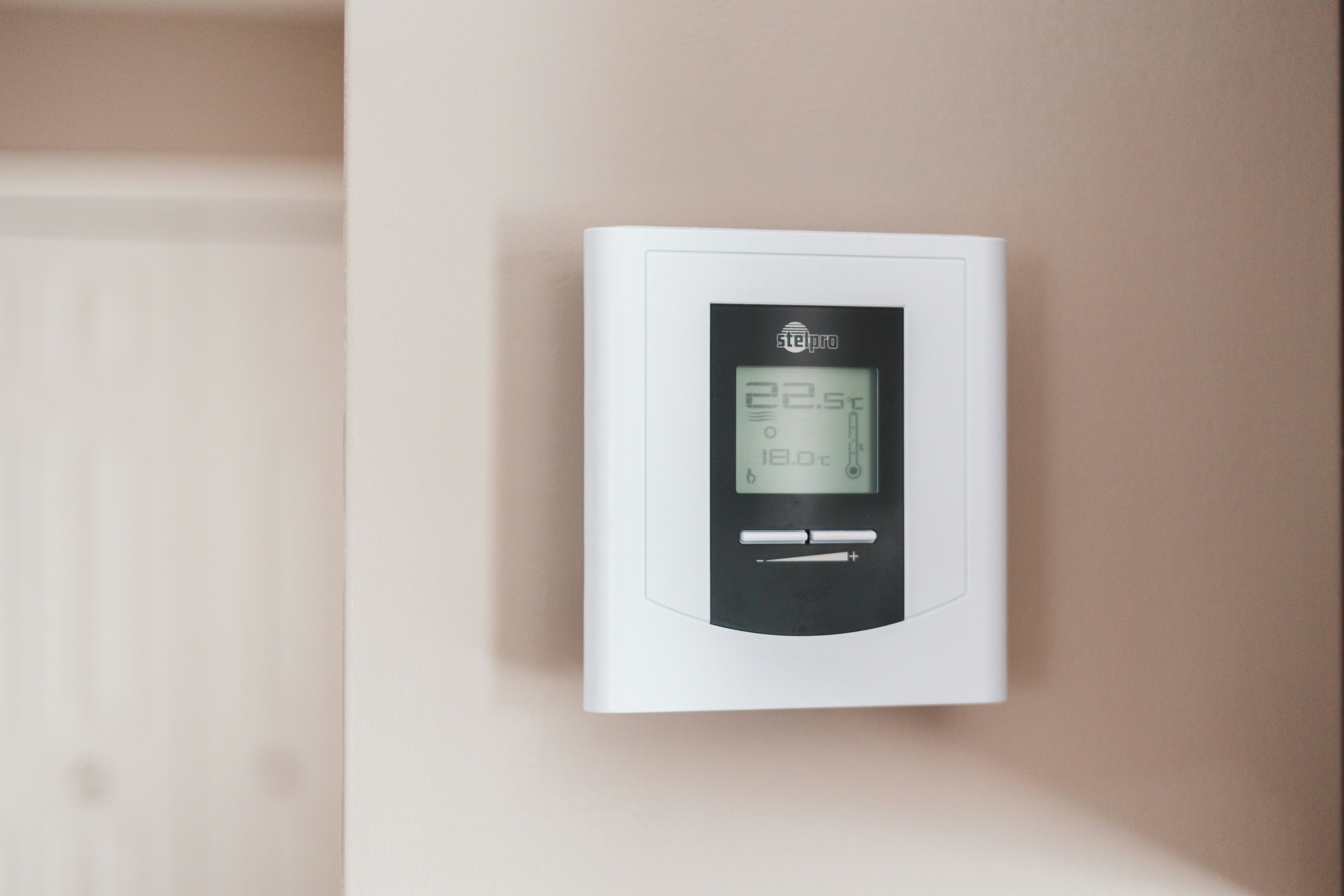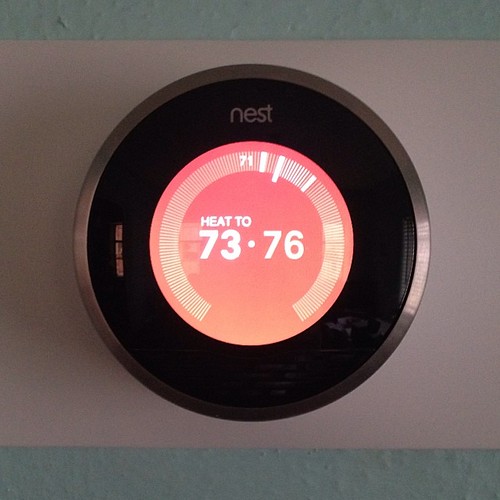Imagine coming home after a long day at work and walking into a perfectly comfortable, cozy environment that has been tailored to your exact preferences. No more fumbling with outdated thermostats or wasting energy on empty rooms. Smart home thermostats are revolutionizing the way we control our indoor climate, offering not only unparalleled convenience but also significant energy savings. In this article, we will explore the transformative impact of smart home thermostats, delving into their ability to optimize comfort and efficiency while reducing our carbon footprint. Get ready to discover a new level of control and comfort that will leave you wondering how you ever lived without it.

Smart home thermostats are a revolutionary technology that allows homeowners to control and monitor their home's heating and cooling systems remotely. These devices offer a wide range of features and benefits, making them an increasingly popular choice for homeowners looking to enhance their comfort and energy efficiency.
There are several advantages to using smart home thermostats. Firstly, they provide greater control and flexibility over your home's temperature settings, allowing you to easily adjust the temperature from anywhere using your smartphone or other connected devices. Additionally, smart thermostats can learn your preferences and create personalized schedules to optimize energy usage and save money on heating and cooling costs. They can also provide valuable insights into your energy consumption, helping you make informed decisions to reduce your carbon footprint.
Smart home thermostats use advanced sensors and algorithms to monitor and regulate the temperature in your home. These devices can connect to your home's Wi-Fi network, enabling you to control them remotely through a mobile app or voice commands. They can also integrate with other smart home devices, such as smart speakers or home automation systems, to create a seamless and interconnected ecosystem. Some smart thermostats even have additional features like occupancy detection and geofencing, which further optimize energy usage based on your presence or absence from the home.

Smart home thermostats offer a range of features that can greatly enhance comfort in your home. One of the key benefits is the ability to control the temperature remotely. Whether you're at work or on vacation, you can easily adjust the thermostat using your smartphone. This means you can come home to a perfectly comfortable environment, without wasting energy by leaving the heating or cooling on all day. Additionally, smart thermostats can learn your preferences and adjust the temperature accordingly, ensuring optimal comfort at all times.
Energy efficiency is a major advantage of using smart home thermostats. These devices are designed to optimize energy usage by learning your schedule and adjusting the temperature accordingly. For example, if you typically leave for work at 8 am, the thermostat can lower the temperature during the day to save energy. It can then start heating or cooling your home before you return, so you arrive to a comfortable environment. Additionally, smart thermostats can provide insights and recommendations on how to further reduce energy consumption, helping you save money on your utility bills.
The future of smart home thermostats looks promising, with several exciting trends on the horizon. One of the key developments is the integration of artificial intelligence (AI) technology. This will enable thermostats to adapt and learn from user behavior in a more advanced way. AI-powered thermostats will be able to analyze data from various sources, such as weather forecasts and occupancy patterns, to make even more accurate temperature adjustments. Additionally, smart thermostats are expected to become more interconnected with other smart devices in the home, allowing for seamless automation and control of the entire household environment.

Installing and setting up a smart home thermostat is a straightforward process that can be done by following the manufacturer's instructions. Typically, it involves turning off the power to the HVAC system, removing the old thermostat, and connecting the new smart thermostat to the existing wiring. Once installed, the smart thermostat can be set up using a smartphone app or through the device's interface. This allows homeowners to control and monitor their home's temperature remotely and enjoy the benefits of a more efficient and convenient heating and cooling system.
Smart home thermostats are designed to be compatible with a wide range of HVAC systems, including central heating and cooling, heat pumps, and multi-zone systems. However, it is important to check the compatibility of a specific smart thermostat model with the HVAC system in your home before making a purchase. Most manufacturers provide compatibility information on their websites or in the product documentation. In some cases, additional wiring or adapters may be required to ensure proper compatibility and functionality.
Smart home thermostats can seamlessly integrate with existing home automation systems, allowing homeowners to control their HVAC system along with other smart devices in their home. Integration with popular home automation platforms such as Amazon Alexa, Google Assistant, and Apple HomeKit enables voice control and the ability to create customized scenes and routines. This integration allows for a more streamlined and cohesive smart home experience, where temperature settings can be adjusted automatically based on occupancy, time of day, or other triggers set up within the home automation system.

With the advancements in voice control technology, smart home thermostats now offer the convenience of controlling your home's temperature using voice commands. This feature allows you to adjust the temperature, set schedules, and even change modes without having to physically interact with the thermostat.
Energy-saving programs integrated into smart home thermostats help you reduce energy consumption and save on utility bills. These programs analyze your usage patterns and adjust temperature settings accordingly, optimizing energy efficiency without compromising comfort. You can also customize energy-saving settings based on your preferences and lifestyle.
Smart home thermostat apps provide convenient remote control access to your thermostat from anywhere. With these apps, you can monitor and adjust temperature settings, set schedules, and receive alerts or notifications on your smartphone or tablet. This remote control feature ensures that you can manage your home's temperature even when you are away, enhancing convenience and flexibility.
There are several popular brands and models of smart home thermostats available on the market. One of the most well-known brands is Nest, which offers models like the Nest Learning Thermostat and the Nest Thermostat E. These thermostats have features such as learning algorithms, remote control via smartphone apps, and energy-saving capabilities. Another popular brand is Ecobee, known for its Ecobee SmartThermostat and Ecobee3 Lite. These thermostats offer features like room sensors for temperature control in multiple areas of the home and compatibility with voice assistants like Amazon Alexa and Google Assistant. Other notable brands in the smart home thermostat market include Honeywell, Emerson, and Sensi.
Smart home thermostats are designed to not only provide convenient and efficient temperature control but also help homeowners monitor and reduce their energy consumption. These thermostats often come with energy monitoring features that allow users to track their heating and cooling usage over time. They provide insights into energy usage patterns, show how different temperature settings impact energy consumption, and offer suggestions for optimizing energy efficiency. Some smart thermostats can even provide monthly energy reports, comparing energy usage to previous periods and providing tips for further energy savings. By monitoring energy consumption, homeowners can make informed decisions to reduce their environmental impact and save on energy costs.
Geofencing technology is a key feature in many smart home thermostats. Geofencing uses the GPS on a user's smartphone to create a virtual boundary around their home. When the user's smartphone enters or exits this boundary, the smart thermostat can automatically adjust the temperature settings accordingly. For example, when the user leaves their home, the thermostat can switch to an energy-saving mode to reduce unnecessary heating or cooling. When the user is on their way back, the thermostat can start adjusting the temperature to ensure a comfortable environment upon arrival. Geofencing technology not only provides convenience but also helps save energy by avoiding unnecessary heating or cooling when the home is unoccupied.

Zoning control systems are a key feature of smart home thermostats. These systems allow for the division of a home into different zones, each with its own temperature settings. This enables more precise control over heating and cooling, as different areas of the house can be heated or cooled based on individual preferences and occupancy. Zoning control systems can lead to energy savings and increased comfort by avoiding unnecessary heating or cooling of unoccupied areas.
Smart home thermostats utilize learning algorithms to adapt to the user's preferences and schedule. These algorithms analyze data such as temperature settings, occupancy patterns, and external weather conditions to optimize heating and cooling schedules. Over time, the thermostat learns the user's preferred temperature settings for different times of the day and adjusts accordingly. This not only increases comfort but also helps save energy by avoiding unnecessary heating or cooling when the home is unoccupied.
Smart home thermostats can integrate with smart grid technology, allowing for more efficient energy usage. By connecting to the smart grid, the thermostat can receive signals from the utility company, such as peak demand periods or time-of-use pricing. Based on this information, the thermostat can automatically adjust temperature settings to optimize energy consumption and reduce costs. Smart grid integration also enables features like demand response, where the thermostat can temporarily adjust temperature settings during periods of high demand to help balance the grid and avoid blackouts.
In conclusion, smart home thermostats have revolutionized the way we experience comfort and efficiency in our homes. These devices have not only made it easier for us to control and customize our indoor climate, but they have also significantly reduced energy consumption and carbon emissions. With the ability to learn our preferences and adjust settings accordingly, smart thermostats have become an essential tool in the fight against climate change and the pursuit of sustainable living. Moreover, the integration of smart home thermostats with other smart devices and the emergence of voice control technology have further enhanced their convenience and functionality. As we continue to prioritize energy efficiency and environmental sustainability, smart home thermostats will remain a crucial component of our modern homes, ensuring comfort, efficiency, and a greener future.